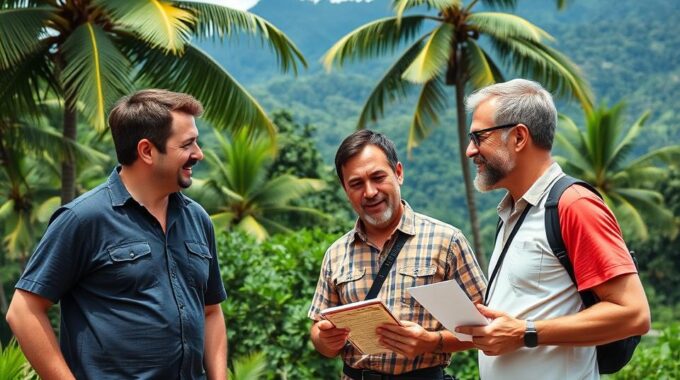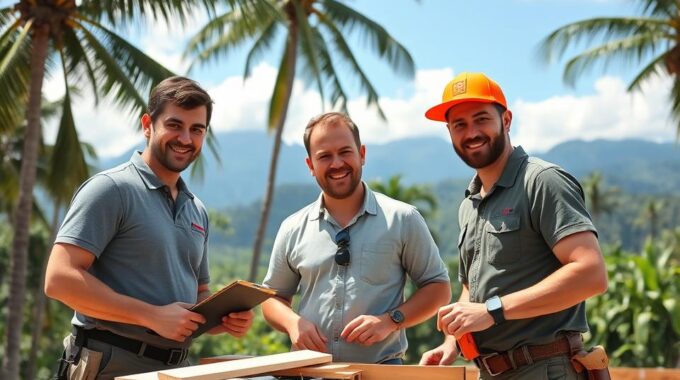Discover transparent, no-hidden-fees personal loans in Costa Rica with GAP Equity Loans. Experience fair financing and clear terms.

Understanding Bridge Lending GAP Equity Loans Terms in Costa Rica
Understanding Bridge Lending GAP Equity Loans Terms in Costa Rica is essential for individuals looking to finance property in the country. While mortgage loans are the most common option, alternative financing options offer flexibility and unique advantages. One such option is GAP Equity Loans, which allow borrowers to use their Costa Rican property as collateral to borrow funds.
With Bridge lending GAP Equity Loans, borrowers can access borrowing amounts starting from $50,000, with competitive interest rates ranging from 12% to 16%. The loan terms offered range from 6 months to 3 years, providing flexibility for short-term financing needs. This makes it an attractive option for individuals seeking flexible and accessible financing solutions for their Costa Rican property acquisitions.
However, it’s important for borrowers to be aware of the potential risks involved in financing property in Costa Rica. Exchange rate fluctuations and potential fraud are among the factors that can impact investments in the country’s real estate market. Thorough research and seeking expert advice are crucial when considering financing options.
In addition to GAP Equity Loans, there are other financing options available for property acquisition in Costa Rica. Some of these options include owner financing, home equity loans, and self-directed IRAs. Each option has its own benefits and considerations, so it’s important for individuals to carefully evaluate their financing needs and choose the option that best suits their circumstances.
Banco BCT S.A. is a reputable lender in Costa Rica that offers financing options specifically for U.S. citizens residing in the country. Their expertise and understanding of the local market can be invaluable for individuals seeking financing solutions.
When considering Costa Rica real estate financing options, it’s crucial to plan ahead and conduct thorough research. Working with experienced professionals can help navigate the complexities of the process and ensure a smooth financing experience.
Key Takeaways:
- Bridge lending GAP Equity Loans allow borrowers to use their Costa Rican property as collateral for borrowing.
- Borrowing amounts range from $50,000 and up, with interest rates between 12% and 16%.
- Loan terms can be as short as 6 months or as long as 3 years, providing flexibility for short-term financing needs.
- Financing property in Costa Rica comes with risks, including exchange rate fluctuations and potential fraud. Thorough research and seeking expert advice are crucial.
- Other financing options include owner financing, home equity loans, and self-directed IRAs, each with its own benefits and considerations.
- Banco BCT S.A. offers financing options specifically for U.S. citizens residing in Costa Rica, providing specialized services for this group.
- Proper planning, research, and working with reputable lenders or brokers are essential when considering Costa Rica real estate financing options.
Please note that the image placement and alt text are for visual representation only and may need to be adjusted appropriately in the final version of the article.
Borrowing from $50,000 and Up, Interest Rates 12% to 16%, 6 Months to 3-Year Terms
Finding the right financing option is essential when considering property acquisition in Costa Rica. Bridge lending GAP Equity Loans offer borrowers the flexibility they need, with borrowing amounts starting from $50,000 and competitive interest rates ranging from 12% to 16%. The loan terms provided by GAP Equity Loans in Costa Rica are also advantageous, offering flexibility with repayment schedules ranging from 6 months to 3 years. This allows borrowers to tailor their financing to meet their short-term needs.
Alternative financing options such as seller financing and home equity loans may not offer the same level of flexibility and borrowing capacity as GAP Equity Loans. Seller financing, for instance, may be limited by the seller’s willingness to finance and the terms they offer. Home equity loans, on the other hand, may have restrictions based on the amount of equity a borrower has in their property. However, with GAP Equity Loans, borrowers are able to leverage their Costa Rican property as collateral, opening up borrowing opportunities that may not be available through traditional financing methods.
It is important to note that financing property in Costa Rica, while beneficial, does come with risks. Exchange rate fluctuations can impact the value of the property and the cost of repayments. Additionally, potential fraud within the Costa Rican real estate market is always a concern. This is why it is crucial for borrowers to conduct thorough research, seek expert advice, and work with reputable lenders or brokers who have experience in the Costa Rican market.
Table: Comparison of Financing Options
| Financing Option | Borrowing Amounts | Interest Rates | Loan Terms |
|---|---|---|---|
| Mortgage Loans | Varies | 9% to 12% | 5 to 30 years |
| Seller Financing | Varies | Agreed upon with seller | Agreed upon with seller |
| Home Equity Loans | Dependent on equity | Varies | Varies |
| Gap Equity Loans | From $50,000 and up | 12% to 16% | 6 months to 3 years |
In conclusion, understanding the terms of Bridge lending GAP Equity Loans in Costa Rica is crucial for individuals looking to finance property in the country. With borrowing amounts starting from $50,000, interest rates between 12% and 16%, and repayment terms ranging from 6 months to 3 years, GAP Equity Loans provide flexibility and competitive terms. However, it is important to be aware of the risks associated with financing property in Costa Rica and to conduct thorough research, seek expert advice, and work with reputable lenders or brokers to mitigate these risks. Alternative financing options such as seller financing, home equity loans, and self-directed IRAs should also be considered. Banco BCT S.A. offers financing options specifically for U.S. citizens residing in Costa Rica, providing additional opportunities for funding property acquisitions.
Financing Options and Risks for Costa Rican Property Acquisition
Finding the right financing options is crucial for individuals interested in real estate investment in Costa Rica. While traditional mortgage loans are the most common choice, alternative financing options like seller financing and home equity loans provide flexibility for property acquisition. Additionally, Gap Equity Loans (GEL) offer an innovative solution for borrowers who want to leverage the value of their Costa Rican property.
GAP Equity Loans in Costa Rica allow borrowers to use their property as collateral, offering borrowing amounts starting from $50,000. These loans come with competitive interest rates, ranging from 12% to 16%, and flexible loan terms ranging from 6 months to 3 years. This provides borrowers with the necessary funds for short-term financing needs, such as property acquisition or renovations.
However, it’s important to consider the risks associated with financing property in Costa Rica. Exchange rate fluctuations can impact the cost of borrowing, and potential fraud in the real estate market is a concern. To mitigate these risks, thorough research, expert advice, and working with reputable lenders or brokers are essential.
Loan-to-Value Ratio and Other Financing Options
One important factor to consider when financing property in Costa Rica is the loan-to-value (LTV) ratio. Lenders typically require a down payment and set a maximum LTV ratio, which determines the amount of financing available based on the appraised value of the property. Different lenders may have varying LTV ratios and eligibility requirements, so it’s important to explore various financing options.
Other financing options available in Costa Rica include owner financing, home equity loans, and self-directed IRAs. Owner financing allows buyers to negotiate loan terms directly with the seller, often with more flexibility compared to traditional lenders. Home equity loans use the equity built in an existing property as collateral, providing borrowers with access to additional funds. Self-directed IRAs offer a tax-advantaged way to invest in real estate, allowing individuals to use retirement funds for property acquisition.
Banco BCT S.A. is a reputable lender offering financing options specifically tailored for U.S. citizens residing in Costa Rica. Their financing options include GAP Equity Loans and home equity loans, providing borrowers with a variety of choices to suit their needs. Proper planning, research, and seeking expert advice are crucial when considering financing options in Costa Rica to ensure a successful real estate investment.
| Financing Options | Interest Rates | Loan Terms |
|---|---|---|
| Bridge lending GAP Equity Loans | 12% – 16% | 6 months – 3 years |
| Mortgage Loans | 9% – 12% | 5 – 30 years |
| Owner Financing | Negotiable | Varies |
| Home Equity Loans | Depends on lender | Varies |
| Self-Directed IRAs | Depends on investment | Varies |

When considering Costa Rica real estate financing options, it’s crucial to evaluate the benefits and risks associated with each option. Thoroughly researching the market, seeking expert advice, and understanding the terms and conditions of each financing option will help individuals make informed decisions and maximize their investment potential in Costa Rican properties.
Other Financing Options and Expert Advice for Costa Rica Real Estate Financing
When it comes to financing real estate in Costa Rica, there are several options available beyond traditional mortgage loans. These alternative financing methods provide greater flexibility and can be tailored to individual needs. Let’s explore some of these options:
Owner Financing:
Owner financing, also known as seller financing, allows buyers to make payments directly to the property owner, bypassing the need for a mortgage lender. This can be an attractive option for those who may not qualify for traditional bank loans or wish to avoid complex loan approval processes. It often offers more flexible terms and conditions, making it easier for buyers to secure financing.
Home Equity Loans:
Home equity loans allow homeowners to borrow against the value of their property. This type of financing can be used to fund real estate investments or renovations. By leveraging the equity in their existing home, borrowers can access funds for property acquisition in Costa Rica. It provides a convenient way to tap into available capital without selling the property.
Self-Directed IRAs:
Self-directed Individual Retirement Accounts (IRAs) allow investors to use their retirement savings to finance real estate investments. With a self-directed IRA, the investor has control over the investment choices, including the option to invest in Costa Rican properties. This can be a tax-efficient way to finance real estate acquisitions while diversifying retirement portfolios.
Before making any financial decisions, it is crucial to consider the risks involved in Costa Rica real estate financing. Exchange rate fluctuations can impact loan repayments, and there is a potential for fraud in the real estate market. Thorough research, working with reputable lenders or brokers, and seeking expert advice are essential to mitigate these risks and make informed financing decisions.
Banco BCT S.A. is one such reputable lender in Costa Rica. They offer financing options specifically designed for U.S. citizens residing in the country. Their loan-to-value (LTV) ratio can go up to 65%, and borrowers can enjoy terms up to 20 years. With proper planning and research, individuals can explore these financing options and find the one that best suits their needs.
Remember, financing property in Costa Rica requires careful consideration of various options and expert advice. By exploring alternative financing methods like owner financing, home equity loans, and self-directed IRAs, individuals can find creative ways to invest in real estate and fulfill their Costa Rican property dreams.

Understanding Bridge Lending GAP Equity Loans Terms in Costa Rica is crucial for individuals looking to finance property in the country. Mortgage loans are the most common option, with terms ranging from 5 to 30 years and interest rates between 9% and 12%. Alternative financing options, such as seller financing and home equity loans, provide flexibility.
GAP Equity Loans in Costa Rica allow borrowers to use their property as collateral and offer borrowing amounts starting from $50,000 with competitive interest rates and flexible terms. However, financing property in Costa Rica comes with risks such as exchange rate fluctuations and potential fraud, so thorough research, seeking expert advice, and working with reputable lenders or brokers are essential.
Other financing options include owner financing, home equity loans, and self-directed IRAs. Banco BCT S.A. offers financing options specifically for U.S. citizens residing in Costa Rica. Financing can also be obtained through home equity loans or self-directed IRAs. The availability of bank financing has improved, but the process can still be challenging, requiring a sizable down payment and higher interest rates. Banco BCT S.A. offers a new financing option for U.S. citizens, with loan-to-value (LTV) of up to 65% and terms up to 20 years. Proper planning and research are essential when considering Costa Rica real estate financing options.
FAQ
What are Bridge Lending GAP Equity Loans?
Bridge Lending GAP Equity Loans in Costa Rica allow borrowers to use their property as collateral to borrow money. These loans provide flexible borrowing amounts starting from $50,000, competitive interest rates, and flexible terms.
What are the interest rates and loan terms for Bridge Lending GAP Equity Loans?
The interest rates for Bridge Lending GAP Equity Loans in Costa Rica can range from 12% to 16%. The loan terms offered are between 6 months and 3 years, providing flexibility for short-term financing needs.
What are the risks associated with financing property in Costa Rica?
When financing property in Costa Rica, there are risks such as exchange rate fluctuations and potential fraud. It is important to thoroughly research, seek expert advice, and work with reputable lenders or brokers to mitigate these risks.
What are the other financing options available for property acquisition in Costa Rica?
In addition to Bridge Lending GAP Equity Loans, other financing options for Costa Rica property acquisition include owner financing, home equity loans, and self-directed IRAs. These options provide flexibility and can be explored with proper planning and research.
Are there specific financing options for U.S. citizens residing in Costa Rica?
Yes, Banco BCT S.A. offers financing options specifically for U.S. citizens residing in Costa Rica. They provide loan-to-value (LTV) ratios of up to 65% and terms up to 20 years. It is important to consider these options and seek expert advice before making any financing decisions.
What should individuals consider when exploring Costa Rica real estate financing options?
Individuals should thoroughly research their financing options, seek expert advice, and consider factors such as interest rates, repayment terms, loan-to-value ratios, and potential risks. Proper planning and research are essential when considering Costa Rica real estate financing options.
Article by Glenn Tellier (Founder of CRIE and Grupo Gap)



